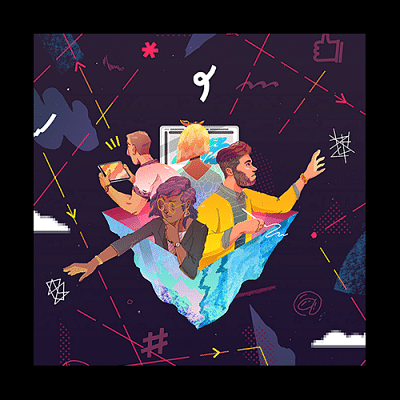How creativity is shaping the future of brands

Technological trends are completely changing the way we feel things, e.g. the way we interact with brands, the way we make payments, and the way products are marketed to us. We can browse products on Instagram and make orders on the same post. About 80 percent of millennials said that they would rather pay for experiences than products.
There are important implications in this fact for brands, as loyalty is earned by actions and not words. Brands must design experiences. Consumers have beliefs about brands that lead to actions, and ultimately result in experiences. And this not one-way traffic, it is a cyclical process of beliefs, actions, and experiences.
In what follows, I will outline some of the ways brands are being creative with technology and making consumers re-imagine the whole consumer experience.
BENTLEY INSPIRATOR
With the Bentley Inspirator app you can customise your own Bentley. But what's so creative about that? The creativity lies in the way the car is customised. The app uses latest technology to read emotional responses as it guides you through an interactive film. Your responses are used to create the ideal Bentley for you.
HEINEKEN IGNITE
What could be creative about selling bottles of beer? The bottle of course. Heineken Ignite is the first interactive bottle that lights up based on the user's actions like cheering or taking a gulp. Fitted with LEDs and motion sensors, Heineken aimed to connect people in clubs while keeping their product at the centre.
UMOOD BY UNIQLO
Clothing giant Uniqlo has a huge range of t-shirts and picking the right one for you can be exhausting. To help customers make better choices, Uniqlo came up with UMOOD, an innovation that uses neuro-technology to analyse brainwaves. In this way it can determine the current mood of a shopper and suggest t-shirts based on that. Shopping was never this easy.
IKEA AR APP
This handy mobile app lets you see how a piece of furniture would look in your house before you actually order it. It gives you a virtual view of the furniture in your house. You can even move things around. Since it's AR, it makes the whole process very fun and engaging.
OPTIMEYES BY AMSCREEN
OptimEyes uses facial recognition to identify customer demographics such as age and gender. It then uses this data to display targeted ads on screens at the cash counters. Large supermarkets such as Tesco have been using Optimeyes for a few years now. At least this way you won't be shown adverts meant for the opposite sex.
These are just some of the ways big brands are leveraging creativity to disrupt the commercial landscape. It's clear as day that creatives will play a huge role in shaping the brand commerce for firms. With that being said, there are three takeaways for creatives: 1. Technology is part of the creative idea, not the idea itself; 2. Every touch-point in the digital ecosystem is important; 3. Moments should be made memorable, connect on an emotional level.
Inspired by Cheyney Robinson's talk at Spikes Asia 2016. Cheyney Robinson is the Chief Experience Officer at Isobar, EMEA and APAC.

 For all latest news, follow The Daily Star's Google News channel.
For all latest news, follow The Daily Star's Google News channel. 



Comments